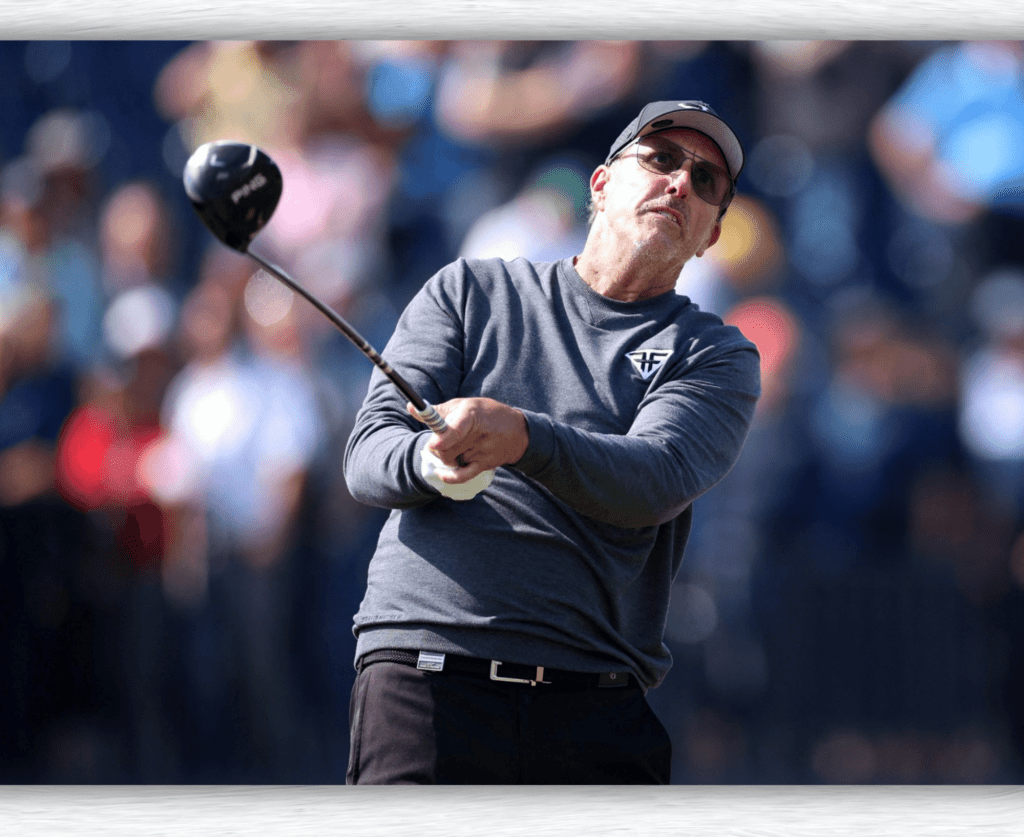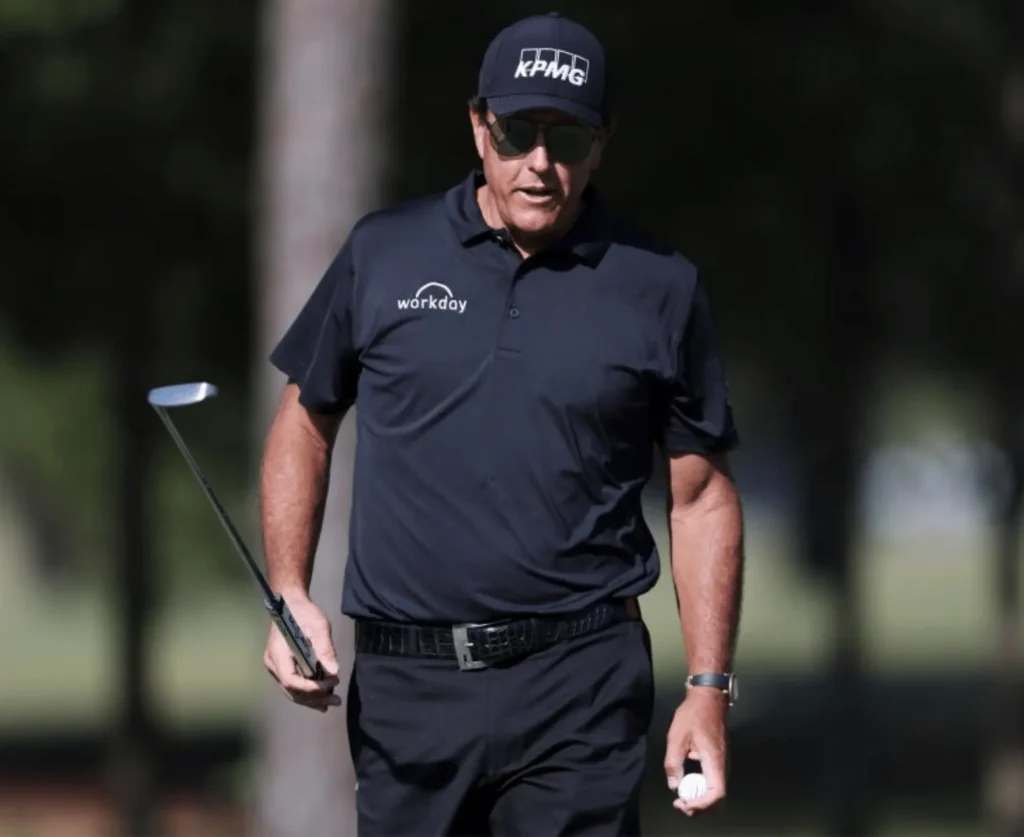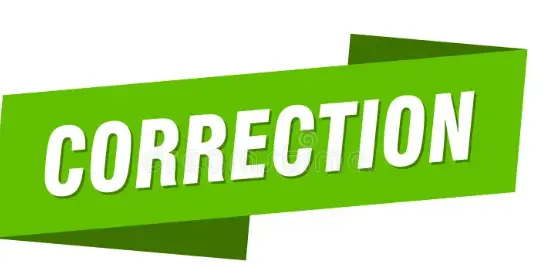How Phil Mickelson identifies and corrects poor ball strikers

Poor ball strikers a common dilemma among amateur and recreational golfers. It often leads to dissatisfaction with the course and inconsistent gameplay. The legendary ball striker Phil Mickelson identifies a certain weakness that plagues players who are having trouble with their game.
The purpose of this piece is to clarify Mickelson’s philosophy about an important facet of golf. Through his expert lens, we’ll explore the degree of this flaw. Further, we will also discuss ways to address it.
Understanding Ball Striking in Golf
Ball striking in golf refers to the skill of hitting the ball with accuracy, force, and consistency to the desired trajectory and distance. It is a crucial part of the game because it affects a player’s performance on the course and score.
Phil Mickelson’s Observation about Poor Ball Strikers: The One Flaw

Phil Mickelson, an American golfer, stands as a towering figure in the world of professional golf. His career, decorated with many major championships, showcases his exceptional talent, resilience, and competitive spirit.
Phil Mickelson has played with many golfers of different skill levels and has discovered the one thing that all bad ball strikers have in common: an improper grip.
Most amateurs, in Mickelson’s opinion, hold the club too tightly, which tightens every muscle in their body and makes it difficult for them to control their swing. As a result, they start to hit the ball inconsistently and inaccurately.
His observation applies across the golfing field. Mickelson noted that even amongst amateurs and the occasional weekend golfer, the one characteristic that often leads to poorly struck balls is a “trapped” club. It is often caused by an incorrect wrist position during the swing. This insight is crucial as it not only pinpoints the problem but also highlights a method for improvement.
Correcting the flaw

Recognizing the flaw is one thing; correcting it is where Mickelson’s insights truly shine. In his own words, “Most amateurs have the clubface pointed way to the right, and on the downswing, the only way to square it up is to flip the hands, which is when people say you have to have good timing to play this game.”
From his bag, Mickelson pulls out a pitching wedge and describes a made-up scenario that he has encountered many times throughout his career.
He continues, “[Let’s pretend] I hit a nice drive on hole 14 at Augusta, with the pin over there on the right.” “I want to hit it hard so that it stops as soon as possible.
“I’m going to get my alignment and I’m not going to draw this one, so it will be straight. However, because of the wind, it will be pushed high, so I will cast this club a little bit.”
Then Dethier asks Mickelson what makes hitting a straight ball different from hitting a fade or a draw.
“It’s a feel thing,” Mickelson says. “If I’m hitting a draw, I’ll let [my arm] release over. If I’m hitting a fade, I’ll get a little wider and try to hit the outside part of the ball; which slows down the release of the club.
“[When hitting a straight shot], I’m feeling the club goes back to square.”
Mickelson continues, “This is where you can tell the difference between good and bad ball-strikers.”
“You won’t find a good ball-striker who doesn’t set up with a straight line arm and club. You can return to that position (even swinging 100 miles per hour, or whatever), and feel yourself going back to square,” he says.
“If you start with your lead arm bent, there’s looseness. If you start there, you can’t go back to a certain point in the backswing, stop, and go forward. But if you start in a straight line, you can take it back and you’re in a position to go forward.”
You can strike the ball more effectively if you pay more attention to where your hands are placed.
“If you start with your hands back, you go to any point, you have to wait for the club to down,” he adds. “All [poor] ball-strikers will start with their hands back, while all good ones will start with their lead arm straight. So I’ll start with a straight line going back, and then I’ll feel it cast back to a straight line [coming down].”
Conclusion:
In summary, Mickelson’s advice on ball striking is a master class in both technique and mentality. We have the chance to improve under his guidance and realize the true potential of golf.
FAQs
1. What is the flaw that affects ball-strikers?
The common problem that Mickelson pointed out is that when golfers hit the ball, they often block their pivot. There are several possible causes of this block, such as an improper weight transfer, an early straightening of the knees, and a rigidity of the body. In essence, it’s the player’s entire body kinetic chain breaking down when they make contact with the ball.
2. How does this flaw impact performance?
When the pivot is blocked, the golfer’s power and consistency take a significant hit. Rather than allowing the arms, shoulders, and hips to work in sync, the body becomes segmented. This segmented body leads to errant shots, loss of distance, and a lack of control. It can also put added stress on the muscles and cause pain or injury over time.
3. Can this flaw be corrected or improved?
Thankfully, yes. No matter how ingrained the habit, the golf swing is a learned motion and can be relearned. It requires focus and practice, often with the aid of a professional coach who can break down the swing mechanics and guide the player through the necessary adjustments.
4. Are there specific drills to address this flaw?
Several drills can help golfers unblock their pivot. One of the most effective is the ‘step drill’, where the golfer takes small steps as they swing, ensuring weight transfer and fluidity. Another is the ‘lag drill’, which emphasizes delaying the release of the club while maintaining a proper pivot, thus reinforcing the connection between the lower and upper body.













